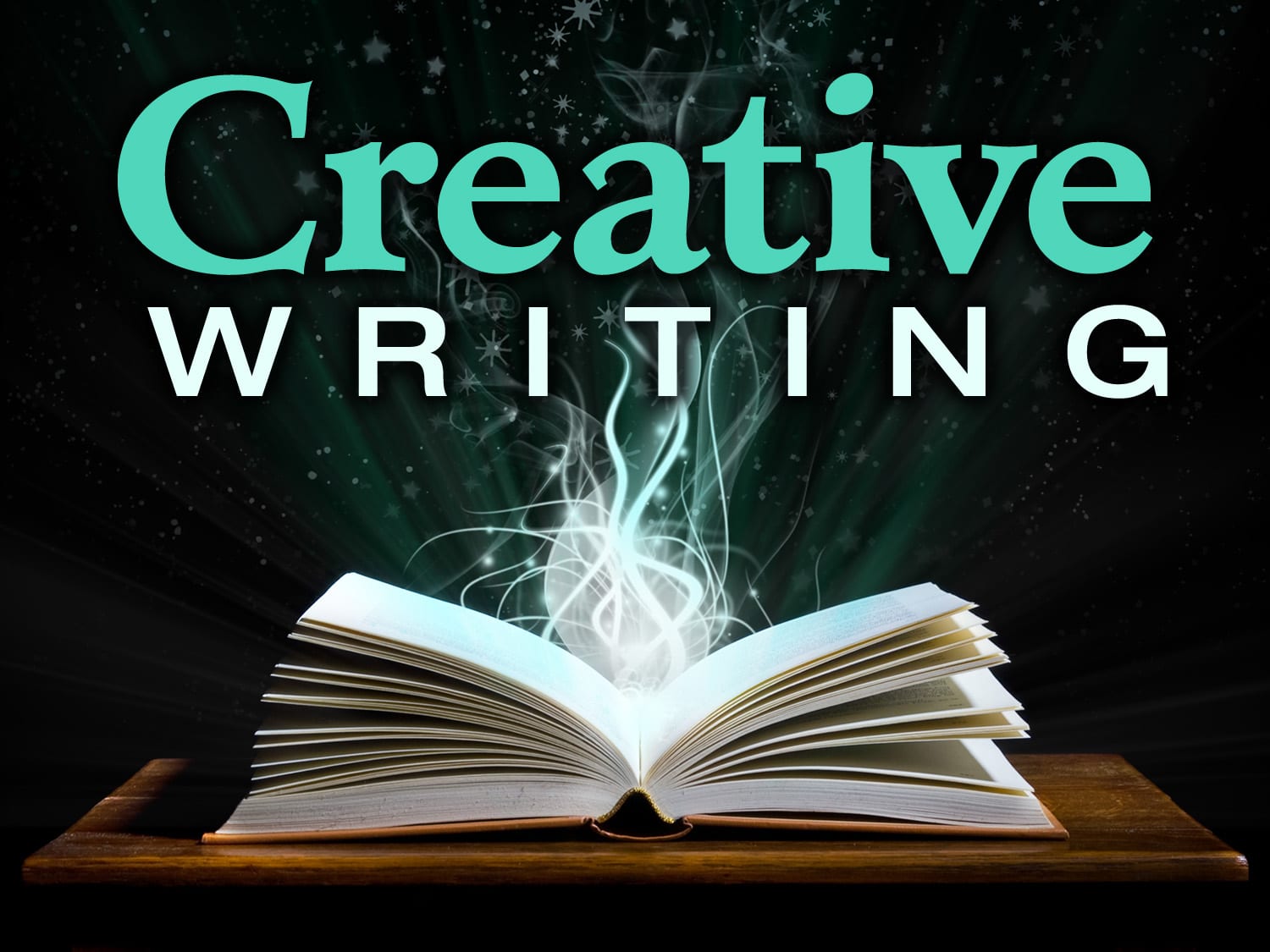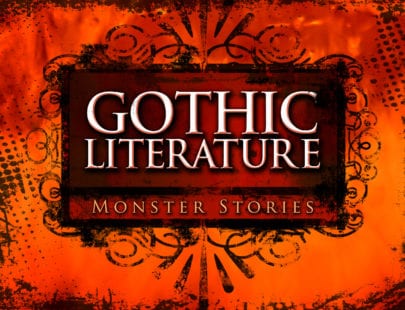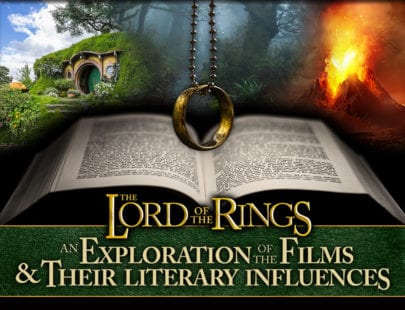
Creative Writing
Literature is an important form of art that allows us to give voice to our emotions, create imaginary worlds, express ideas, and escape the confines of reality. Explore the writing process and find inspiration to build a story of your own, and learn literary techniques to create hybrid forms of poetry and prose. Let’s turn your creative thoughts and ideas into pieces of creative writing.
Units at a Glance
Unit 1: Starting the Path to Creative Writing
Do you ever feel words or stories inside your mind, swirling around like unspoken dreams looking for an escape? Creative writing is a medium for finding a release of imagination and tapping into your inner world as a writer. However, unlike closing your eyes and dreaming, effective writing that welcomes the reader in takes real work and ability. There are so many different topics to write about and so many methods to use, putting pen to paper or fingers to keyboard can feel overwhelming. But, as Shakespeare once said, “There is a method to the madness.” In this unit, you will begin to identify different types of creative writing—such as fiction, poetry, and nonfiction—and learn how you can begin to find your place in the wide, vivid world of creative writing.
What will you learn in this unit?
- Analyze how an author’s craft can create such effects as mystery, tension, or surprise.
- Analyze how an author uses source material in a specific work to illuminate a theme.
- Distinguish between genres of creative writing.
- Understand the history and origins of creative writing.
Unit 2: Finding Your Creative Light
Have you ever watched a frantic moth batter itself against a light bulb? Although there is surely a scientific reason behind this phenomenon, all we really know is that they are drawn to the light; they are so attracted to it, they will never stop seeking its warmth. Creativity is a bit like that–it is the source of what makes beauty and meaning in the world. It is the light at the center of everything because it offers a way to make sense of our feelings and experiences in a manner that communicates a bit of ourselves to the outside world. Artistic people find it impossible to live without creativity, and those less inclined are still enraptured by its power. As a society, we have always been drawn to the light-filled energy of creation, whether it be through art, music, innovation, drama, or writing–it sustains us. But in order to capture the essence of this force, there must first be inspiration–a muse, idea, or experience that emboldens us to find an outlet for our feelings. As a creative writer, you must learn how to access your own creativity and identify ways to inspire yourself. Finding your personal style and voice are just a few of the first steps in this journey.
What will you learn in this unit?
- Understand how language functions in different contexts and how to make effective word choices.
- Recognize the importance of an author’s voice and how it affects tone and style.
- Engage in the act of free writing and journaling for inspiration.
- “Mine” for ideas from various places.
Unit 3: Fiction First
If you doubt the complexity of characterization, just sit on a park bench for a few minutes and observe the different people walking by. They are men, women, children, short, lanky, slumped, limber, old, vibrant, sluggish, distracted. Honestly, the list goes on forever. There are so many details to observe about each and every person, and so much going on in their heads that can’t be seen, it’s almost overwhelming. Every human walking by you is a complex character sketch just waiting to be described. When it comes to crafting a fictional person, there’s barely any need to look outside the real world. If you’ve ever devoured a book, you know that the people within the pages are often the most meaningful part of the story and highly essential to its overall effect. Characters are the lifeblood of fiction. Let’s think more deeply about building characters and what it takes to bring them to life in your own writing.
What will you learn in this unit?
- Analyze how language contributes to characterization.
- Evaluate a speaker’s point of view, reasoning, and use of language.
- Describe how a theme or central idea runs through a text and develops over time.
- Understand the characteristics of fiction and its literary elements.
- Determine the strategies necessary when crafting effective characters.
Unit 4: A Fictional Place
Close your eyes and imagine your all-time favorite place, not just how it looks but how it feels. For some reason, certain locations just seem to exude a definite feeling, whether it is in real life or in the pages of a book. “Some reason” is not as cryptic as it sounds; it depends on the mastery and creativity of the writer behind the scene. A room is not just a room. Seen through the eyes of a writer, it can be gloomy with tattered furniture, brightly lit with dingy walls, or wallpapered with a roaring fire; all of these atmospheres relay the expectation of a certain experience. Places have character. Just as we discussed the importance of characterization in fiction, we must also examine the purpose and value of setting. It is the backdrop that adds texture and depth to what the characters are doing. It has the power to affect the very heart of any story and influence the tapestry of one’s imagination. Sounds like a pretty fascinating place, but what does a compelling, effective setting really look like?
What will you learn in this unit?
- Analyze how a writer unfolds a series of ideas, events, or descriptions to enhance setting.
- Determine the meaning of words and phrases in stories, including the use of figurative language.
- Examine how a writer’s creative choices affect the tone and mood of the story.
- Understand the importance of a fictional setting and how it influences other literary elements.
Unit 5: Speech in Writing
The art of writing will require you to capture that voice inside your head and bring it to life on paper. If you’ve ever sat staring at a blank page, you know that’s sometimes easier said than done. Even more perplexing, how do you create written work that’s meant to capture the voice of someone else? Someone who is a character in your piece with an entirely different set of life circumstances, background, even race or gender? Writing dialogue presents a new layer of challenges because, as the writer, you need to essentially write in an “out loud” voice, one that is decidedly not your own. This type of precision writing also applies to another type of composition called “sketch writing,” where the entire storyline plays out quickly in a dramatic snippet. Because both dialogue and sketch writing require a writer to accomplish certain structural goals within a short period of time, being succinct is key. In this unit, we will be focusing our attention (and our writerly abilities) on the art of being concise and learning how to create the phenomenon of fictional speech. Rather than simply describing a fictional scene with language, our challenge will be to fill the fictional mouths of characters with the right words for the job. You thought impersonation was tricky–this takes it to a whole new level!
What will you learn in this unit?
- Analyze how characters develop over the course of a story.
- Understand the purpose and approach to writing effective dialogue.
- Utilize the strategies of writing a sketch story.
- Examine how dialogue is an integral part of both fiction and screenwriting.
Unit 6: When Truth Meets Imagination
There’s an old saying that “truth is stranger than fiction.” Just because something is not entirely made up does not mean it lacks originality or creative flair. Writers of fiction must draw deeply from their imaginary wells to create well-rounded characters, tight action, and intense scenes. You might be surprised that in some cases, nonfiction writers also use these same skills to write great stories. We tend to think of nonfiction as a place for “nothing but the truth,” and when something is all about the facts, we might be tempted to think it’s boring. But there is a type of cross-over literature known as creative nonfiction that takes the fiction writing skills you’ve been studying and applies them to stories and events that have actually happened. The motto of Creative Nonfiction, the main magazine for this genre, describes the genre as “true stories well told.” Nonfiction is a powerful, authentic medium aimed at edifying the reader in addition to entertaining them. When people share their knowledge and background through creative nonfiction, the world becomes a clearer, more understandable place filled with possibility. Through this unit, we will learn exactly how the genre of creative nonfiction can be used in different ways to share findings, explore topics, and strengthen and structure your own narrative.
What will you learn in this unit?
- Determine how an author uses point of view to attain certain goals.
- Recognize and understand the various areas of creative nonfiction.
- Analyze how certain details within the text shape and refine the overall message.
- Identify how to treat facts and truths when creating a narrative.
Unit 7: Finding Your Inner Poet
Not all writing is the same. As a creative person, you probably have different goals for your work and ways of expressing yourself. As writers, we are always looking for just the right words to illustrate what’s happening in our hearts and minds. There may be times when we just want to dig deeper and bring forth the wonder and profundity of the human experience. Poetry allows us to focus on our writing at the word level. It opens a meaningful exploration not only of time and place, but the considerable emotions and impressions that reside there. A poet doesn’t just write about the wind, the poem becomes the wind. As a writer, exploring the secrets of poetry can add tremendous value to your creative writing repertoire.
What will you learn in this unit?
- Analyze and define the way a subject can vary depending on how it is told.
- Determine how and where details are emphasized in various accounts.
- Identify how poetry can access significant ideas through imagery and other literary devices.
- Understand the key strategies of poetic structure.
Unit 8: Revision and Purpose
There is one unique element to writing that is not present in a lot of other art forms: revision. Without it, prose would suffer greatly from lack of clarity, meaning, and structure because as much as we hate to admit it, our first words are not always our best. Through a variety of methods, writers develop many skills for how they can “revisit” their work and see it with new eyes, objectively, and with the intent to make it stronger and more effective. Although they may not admit it, there is unlikely to be an author who doesn’t go through it on some level. The point is: Revision is a stepping stone to the larger goal of publishing or at least reaching a point of satisfaction with the final result. Writing that has consumed part of your heart and soul should see the light of day, right? It deserves to be appreciated by others and validated as meaningful on some level, so let’s explore some ways you can employ revision in your writerly life and possibly seek the golden ring of being published.
What will you learn in this unit?
- Explain the difference between a revision and a critique.
- List several approaches to revision that allow you to see your first draft with more objectivity.
- Explain what professional expectations there are for the different types of writing-related careers.
- Demonstrate the purpose and process of drafting and editing.
Required Materials
- Word or similar document software

